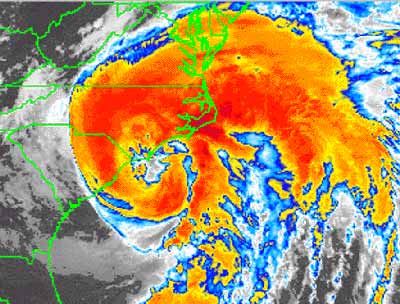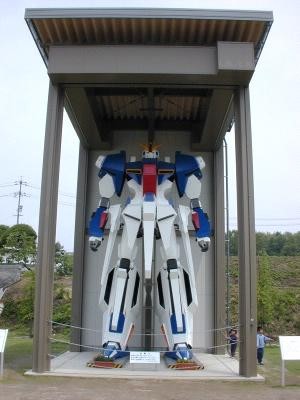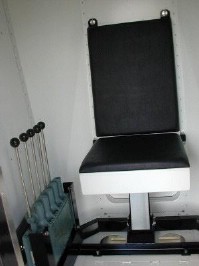 meet the new solar system
meet the new solar systemThat's right, you may have heard it on the news, our solar system has only 8 planets now. Pluto is out. Not that it exploded or anything, it is simply removed from the list. Why? The reason is kinda interesting.
Reason 1: CategoryThe inner planets in our solar system, Mercury, Venus, Earth and Mars are called terrestrial planets. This means that they have a hard surface (rock) to stand on.
Jupiter, Saturn, Uranus and Neptune are called the Jovian planets, since they are all a lot like Jupiter. (Jove was another name for the Roman god, Jupiter). They are also called gas giants. This is because they are made of gas and liquid (but not water). There's no hard surface to stand on. Pluto, however, doesn't get to fit into either of these categories.
Reason 2: Definition of a PlanetThe definition of a planet has also been vague, and there has been much debate over whether or not to define Pluto as one.
A old draft by the International Astronomical Union states, "A planet is a celestial body that (a) has sufficient mass for its self-gravity to overcome rigid body forces so that it assumes a hydrostatic equilibrium (nearly round) shape, and (b) is in orbit around a star, and is neither a star nor a satellite of a planet." The shape of objects with mass above one-ten thousandth of the Earth and diameter greater than 800 kilometers would normally be considered planets.
Reason 3: Orbital Path of PlutoPluto's orbital path is known to cross Neptune's, hence this created much debate over the years as to whether a planet's path must be cleared of neighbouring objects.
Reason 4: More Planets DiscoveredIn addition, three likely planets are discovered. Ceres, Charon and 2003 UB313. Ceres was discovered in 1801 between Mars and Jupiter, and Charon used to be thought to be a moon of Pluto. The categories and definition for these 3 planets (and more in the future as they are discovered) are more complex than Pluto and this may be the main reason to remove Pluto from the list.
So, who are the scientists behind this resolution? How much weight does it carry?The International Astronomical Union is an association of professional astronomers founded in 1919 to, in part, designate celestial bodies. More than 2,500 members gathered in Prague this month for the 26th general assembly, held every three years, to discuss their research and settle the planet debate. Each member -- generally astronomers nominated by their national professional associations and selected by the IAU's executive committee -- gets a vote, though just a few hundred members stuck around until the end of the conference to weigh in on the issue.
The group can't force planetarium owners, textbook publishers and others to go along with its findings. "You can ignore it if you wish. We have no authoritative power," IAU Vice President Bob Williams told the Rocky Mountain News earlier this month.
Still, the change may not be as dramatic as it seems, since educators and researchers had already begun to diminish Pluto's role in recent years. "I don't think it will have a major impact on modern textbooks, most of which say there are eight large planets, and Pluto," Dr. Rabinowitz said.
In the end, the IAU passed Pluto for Resolution 5A and failed it for Resolution 5B. The exact details voted by the IAU are as follows:RESOLUTIONSResolution 5A is the principal definition for the IAU usage of "planet" and related terms. Resolution 5B adds the word "classical" to the collective name of the eight planets Mercury through Neptune.
Resolution 6A creates for IAU usage a new class of objects, for which Pluto is the prototype. Resolution 6B introduces the name "plutonian objects" for this class. The Merriam-Webster dictionary defines "plutonian" as:
Main Entry: plu • to • ni • an
Pronunciation: plü-'tO-nE-&n
Function: adjective
Usage: often capitalized
: of, relating to, or characteristic of Pluto or the lower world
After having received inputs from many sides -- especially the geological community -- the term "Pluton" is no longer being considered.
IAU Resolution: Definition of a Planet in the Solar SystemContemporary observations are changing our understanding of planetary systems, and it is important that our nomenclature for objects reflect our current understanding. This applies, in particular, to the designation 'planets'. The word 'planet' originally described 'wanderers' that were known only as moving lights in the sky. Recent discoveries lead us to create a new definition, which we can make using currently available scientific information.
RESOLUTION 5AThe IAU therefore resolves that planets and other bodies in our Solar System be defined into three distinct categories in the following way:
(1) A planet(*1) is a celestial body that (a) is in orbit around the Sun, (b) has sufficient mass for its self-gravity to overcome rigid body forces so that it assumes a hydrostatic equilibrium (nearly round) shape, and (c) has cleared the neighbourhood around its orbit.
(2) A dwarf planet is a celestial body that (a) is in orbit around the Sun, (b) has sufficient mass for its self-gravity to overcome rigid body forces so that it assumes a hydrostatic equilibrium (nearly round) shape(*2), (c) has not cleared the neighbourhood around its orbit, and (d) is not a satellite.
(3) All other objects(*3) orbiting the Sun shall be referred to collectively as "Small Solar System Bodies".
*1. The eight planets are: Mercury, Venus, Earth, Mars, Jupiter, Saturn, Uranus, and Neptune.
*2. An IAU process will be established to assign borderline objects into either dwarf planet and other categories.
*3. These currently include most of the Solar System asteroids, most Trans-Neptunian Objects (TNOs), comets, and other small bodies.
RESOLUTION 5BInsert the word "classical" before the word "planet" in Resolution 5A, Section (1), and footnote 1. Thus reading:
(1) A classical planet(*1) is a celestial body . . .
and
*1. The eight classical planets are: Mercury, Venus, Earth, Mars, Jupiter, Saturn, Uranus, and Neptune.
IAU Resolution: PlutoRESOLUTION 6AThe IAU further resolves:
Pluto is a dwarf planet by the above definition and is recognized as the prototype of a new category of trans-Neptunian objects.
RESOLUTION 6BThe following sentence is added to Resolution 6A:
This category is to be called "plutonian objects."
Final Note:By passing 5A, but not 5B, astronomers have determined that "dwarf planets" are not to be considered planets. Had 5B also passed, it would have created two subsets of planets: classical planets and dwarf planets. This would have included Ceres and Pluto in the planet club. It also would have opened the door for as many as two or three dozen planets in the solar system. I believe that was the principal objection to passing 5B.
The Wikipedia entries for Pluto, the Solar System and planet were quickly updated.













